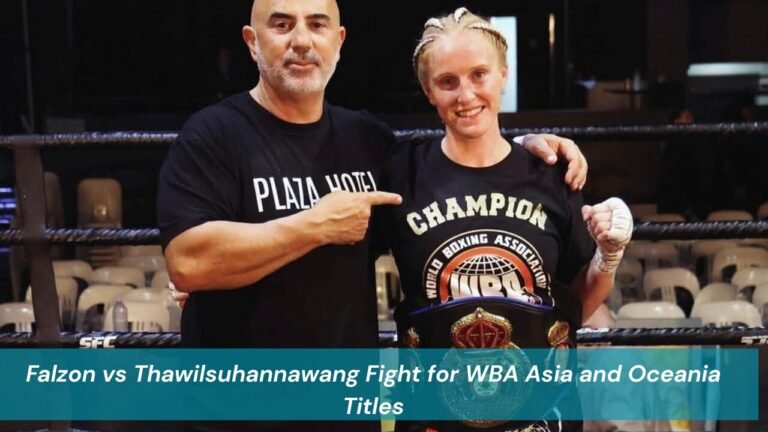Knife crime is one of the most urgent challenges facing communities across the UK and beyond. Whether in London, Birmingham, Manchester, or smaller towns, the issue remains widespread and deeply troubling. For many young people, carrying a knife has become less about aggression and more about a misplaced sense of security. They believe that a weapon offers protection in a world where danger seems ever-present. But this mindset is dangerous in itself, fuelling cycles of fear, intimidation, and tragedy.
Among the many responses to this crisis, one sport is increasingly stepping into the spotlight as a credible and effective solution: boxing. Within the four walls of a boxing gym, young men and women are finding not only physical strength but also resilience, mentorship, and community. Coaches often point out that all the boxers in their gyms know someone who carries a knife. This shared reality highlights the closeness of the issue but also underlines why the sport is so well positioned to make a difference. Boxing against knife crime is no longer just a concept; it is a movement with tangible results.
The Harsh Reality of Knife Crime
Knife crime statistics paint a stark picture of the problem. In England and Wales alone, police recorded more than 49,000 knife-related offences in 2023, a number that reflects both rising violence and ongoing public safety concerns. While these figures fluctuate year by year, the long-term trend shows an unsettling persistence. Behind each number lies a story of fear, mistrust, and sometimes fatal consequences.
Young people are particularly affected. Surveys and studies show that many adolescents carry knives not with the intention to harm others but because they feel unsafe when walking home, attending school, or navigating their neighbourhoods. What starts as a form of self-protection often escalates into tragedy. When conflicts arise, the presence of a knife makes violence more likely, and what could have been a minor altercation can end in life-changing injury or death.
Communities are desperate for alternatives. Schools, families, and law enforcement have all tried to address the issue, but social pressures and lack of opportunity often undermine these efforts. This is where boxing enters the conversation. The sport is not a cure-all, but its principles of discipline, structure, and mutual respect provide exactly the kind of environment many young people need in order to break away from the culture of knife carrying.
Boxing as a Force for Change
At its core, boxing is a discipline that teaches far more than physical techniques. It demands punctuality, consistent training, respect for coaches, and respect for opponents. These values stand in direct contrast to the impulsivity and aggression often associated with knife crime. A young person who commits to boxing begins to see themselves differently. The gloves replace the blade, and the gym replaces the street corner.
The physical demands of boxing also play a critical role in its effectiveness. Adolescents frequently struggle with high levels of energy, frustration, and emotional turmoil. Without a safe outlet, these feelings can manifest as destructive behaviour. A boxing gym provides a controlled space where those emotions are channelled into fitness, skill development, and achievement. For many, the first time they land a clean jab or complete a demanding training session, they experience a new kind of pride that no knife could ever provide.
Mentorship is another crucial component. Many boxing coaches are former fighters or individuals with lived experience of hardship. They speak the same language as the young people they train, and their stories of perseverance carry real weight. A coach who once stood at the same crossroads between violence and discipline can guide a teenager toward the latter with authority and authenticity.
Perhaps most importantly, boxing creates a sense of community. In environments where knife crime thrives, isolation and negative peer pressure often dominate. The boxing gym offers belonging. It replaces the validation sought in gangs with the camaraderie of teammates. Friendships are forged in the ring and on the training floor, rooted in mutual respect rather than fear or intimidation.
Real-World Programs Making a Difference
Across the UK, grassroots initiatives are putting these principles into practice with impressive results.
One of the most prominent examples is Boxwise, a nationwide programme established with the support of promoter Frank Warren. Boxwise operates in multiple cities and provides free boxing training for young people at risk of social exclusion or involvement in crime. The mission is simple yet powerful: to use boxing as a pathway to build confidence, resilience, and community ties that steer participants away from knife carrying. The results have been significant. Young people involved in Boxwise often report feeling safer, more confident, and more motivated in school. Beyond personal transformation, the programme is building networks of trust between gyms, families, and local authorities.
Another compelling story comes from Sunderland, where former boxer Troy Baker organised a knife amnesty at his gym. The concept was straightforward but innovative: bring in a knife, surrender it safely, and in return receive self-defence training. The amnesty collected dozens of weapons, stark evidence of how prevalent knives are in everyday life. But it also demonstrated something more hopeful: when given the opportunity, young people will choose a safer path. Baker’s approach showed that gyms can act as more than training spaces; they can become safe havens and community anchors.
World champion Amir Khan has also spoken passionately about the issue. Visiting Birmingham, he stressed the urgent need for more gyms and youth clubs to provide young people with positive alternatives to gangs and knife culture. Khan’s words carry weight because his story embodies the transformative power of sport. From a working-class background to Olympic glory, he is proof that opportunity, when combined with discipline, can change lives. His advocacy underlines the importance of scaling up community sports facilities nationwide.
Why Boxing Works Where Other Strategies Struggle
The effectiveness of boxing in combating knife culture lies in its holistic approach. Unlike interventions that focus solely on deterrence or punishment, boxing provides both an alternative identity and practical tools for managing conflict.
Boxing creates structure where chaos often reigns. Training requires routine, adherence to rules, and respect for authority. For young people accustomed to unpredictability and instability, this structure can be life-changing. It creates a rhythm that carries into other aspects of life, from school attendance to future employment.
It also builds resilience under pressure. Inside the ring, fighters are forced to manage fear, think strategically, and stay calm under stress. These skills translate directly to the street, where an impulsive reaction could mean the difference between walking away and escalating a conflict. A teenager who has learned to master their emotions in the ring is far less likely to make reckless decisions outside it.
Another reason boxing works is that it provides a positive identity. Being a “boxer” carries a certain level of respect that can replace the validation young people often seek in gangs. Instead of gaining status through intimidation, they gain it through skill, discipline, and courage.
Finally, boxing offers a paradoxical lesson about conflict. Although it is a combat sport, the respect and self-control it requires often reduces the desire to fight outside the ring. A young boxer quickly learns that true strength is not measured by aggression on the streets but by discipline in training and competition.
Building Community Boxing Initiatives
Launching a boxing-based initiative does not require international champions or huge budgets. What it requires is collaboration, commitment, and creativity. Communities can begin by reaching out to local gyms that already have infrastructure and coaches in place. Many gyms are eager to contribute to social good but lack resources. By securing funding from councils, charities, or corporate sponsors, communities can bridge that gap.
Incentives are often key to engaging young people. Programmes that offer free training, provide equipment, or even organise events like knife amnesties are more likely to attract participants. Once young people step into the gym, the training itself becomes the incentive to stay.
Promotion is another vital element. Schools, community centres, and social media platforms should be used to spread awareness of opportunities. Parents and teachers play an essential role in encouraging participation and reinforcing the message that boxing is a safer, more empowering path than carrying a weapon.
Perhaps most importantly, initiatives must measure their impact. By tracking attendance, gathering testimonials, and comparing local crime statistics before and after programmes, communities can demonstrate results. These measurements not only justify continued funding but also inspire replication in other regions.
Frequently Asked Questions
How exactly does boxing reduce knife carrying among youth?
Boxing addresses the root causes of knife crime, such as fear, lack of guidance, and social isolation. By teaching discipline, providing mentorship, and creating safe communities, it offers young people both the tools and confidence to walk away from violence.
Is there evidence that these programmes work?
Yes. Initiatives like Boxwise report improved confidence, school engagement, and reductions in anti-social behaviour among participants. Knife amnesties run by gyms have also shown how effective boxing spaces can be in encouraging safer choices.
Can boxing replace other anti-violence strategies?
Boxing is not a silver bullet. It works best when integrated into a wider strategy that includes schools, families, law enforcement, and social services. However, as part of a holistic approach, its impact is undeniable.
How can individuals support these initiatives?
People can donate money or equipment, volunteer time, sponsor training sessions, or help spread awareness through schools and community groups. Every contribution helps strengthen the network of support around vulnerable young people.
Is boxing safe for teenagers?
When taught by qualified coaches, boxing is no more dangerous than other contact sports. Training emphasises technique, control, and fitness rather than uncontrolled aggression. Many gyms also prioritise non-contact training for younger participants, focusing on fitness and confidence before sparring.
Conclusion
The statement that “all the boxers know someone who carries a knife” is more than a sobering truth; it is a call to action. It highlights both the scale of the problem and the potential of the solution. Boxing is not simply a sport. For countless young people, it is a lifeline that offers identity, discipline, and hope where there was once fear and despair.
Communities that invest in boxing initiatives are not just teaching young people how to fight in the ring; they are teaching them how to fight for safer lives, stronger communities, and brighter futures. The evidence is clear, the examples are compelling, and the opportunity is within reach. The challenge now is to ensure that every young person facing the temptation to carry a knife has the chance instead to pick up a pair of gloves.




